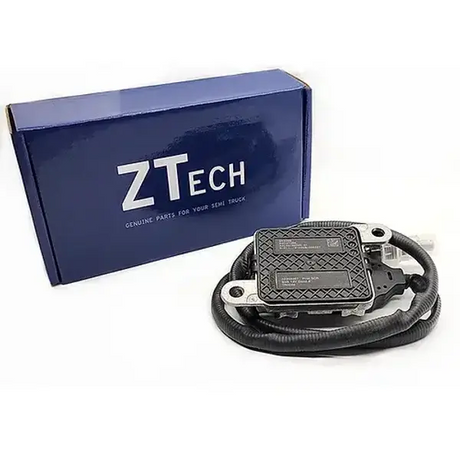What is a NOx sensor?
NOx is the abbreviation for nitrogen oxide. A NOx sensor is located behind the catalytic converter in the exhaust of a car. The sensor measures the amount of nitrogen in the exhaust gases after they have been in the catalytic converter. The main function of a NOx sensor is to reduce harmful nitrogen emissions. A NOx sensor separates the nitrogen and oxygen in the exhaust through a catalytically active electrode. The oxygen is measured in the same way as for example a lambda sensor. Placing a NOx sensor in your car ensures that the nitrogen gases are stored, measured and converted into less harmful substances.
How does a NOx sensor work?
A NOx sensor has two chambers, two pump cells and a heating element. In the first chamber (which resembles that of a broadband sensor), a pump flow is used to maintain the oxygen content in the exhaust gas at about 10ppm. The exhaust gas then flows from the first to the second chamber. In the second chamber, the so-called "NOx reaction" takes place. This means that in this chamber the nitrogen and oxygen are separated by using a catalytically active electrode.
The NOx sensor can only work when the temperature of the exhaust gases is high enough. At that moment there will be no more condensed water present and the measurement will not be affected by this. The measured signal is then sent from the NOx sensor control unit to the engine control unit./
A defective NOx sensor
A NOx sensor reduces the amount of your car's nitrogen emissions. Due to its construction and position, a NOx sensor is very sensitive to malfunctions. This means that the NOx sensor often fails and has a limited life span. A defective NOx sensor can have many negative consequences. When the sensor is not functioning properly, the NOx sensor sends incorrect values to the car's engine management system, also known as the car's ECU. When the signal given by the NOx sensor is no longer within a certain bandwidth, the engine will enter emergency mode, whereby the fuel consumption will increase by approximately 20%. The engine will start to falter and the engine failure light will illuminate. The increasing fuel consumption will cause an increase in harmful emissions.
Removing, disabling or deregistering the NOx sensor seems like the best solution in the short term: however, this is not the case. Partly because it is not permitted by law to drive without an NOx sensor. If you experience the above problems with the NOx sensor, it is advisable to repair or replace it. The sooner you take action in case of a defective NOx sensor, the more limited the engine problem and the resulting additional expenses will be.



















